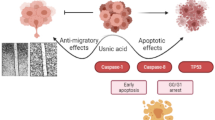Abstract
In this study, we studied the apoptotic and cytotoxic effects of salinomycin on human ovarian cancer cell line (OVCAR-3) as salinomycin is known as a selectively cancer stem cell killer agent. We used immortal human ovarian epithelial cell line (IHOEC) as control group. Ovarian cancer cells and ovarian epithelial cells were treated by different concentrations of salinomycin such as 0.1, 1, and 40 μM and incubated for 24, 48, and 72 h. Dimethylthiazol (MTT) cell viability assay was performed to determine cell viability and toxicity. On the other hand, the expression levels of some of the apoptosis-related genes, namely anti-apoptotic Bcl-2, apoptotic Bax, and Caspase-3 were determined by quantitative real-time polymerase chain reaction (qRT-PCR). Additionally, Caspase-3 protein level was also determined. As a result, we concluded that incubation of human OVCAR-3 by 0.1 μM concentration of salinomycin for 24 h killed 40 % of the cancer cells by activating apoptosis but had no effect on normal cells. The apoptotic Bax gene expression was upregulated but anti-apoptotic Bcl-2 gene expression was downregulated. Active Caspase-3 protein level was increased significantly (p < 0.05).



Similar content being viewed by others
References
Jemal A et al. Cancer statistics, 2006. CA Cancer J Clin. 2006;56(2):106–30.
Aletti GD et al. Current management strategies for ovarian cancer. Mayo Clin Proc. 2007;82(6):751–70.
Eum KH, Lee M. Crosstalk between autophagy and apoptosis in the regulation of paclitaxel-induced cell death in v-Ha-ras-transformed fibroblasts. Mol Cell Biochem. 2011;348(1–2):61–8.
Kerr JF, Wyllie AH, Currie AR. Apoptosis: a basic biological phenomenon with wide-ranging implications in tissue kinetics. Br J Cancer. 1972;26(4):239–57.
Engel T, Henshall DC. Apoptosis, Bcl-2 family proteins and caspases: the ABCs of seizure-damage and epileptogenesis? Int J Physiol Pathophysiol Pharmacol. 2009;1(2):97–115.
Ghobrial IM, Witzig TE, Adjei AA. Targeting apoptosis pathways in cancer therapy. CA Cancer J Clin. 2005;55(3):178–94.
Tsujimoto Y. Role of Bcl-2 family proteins in apoptosis: apoptosomes or mitochondria? Genes Cells. 1998;3(11):697–707.
Miyazaki Y et al. Salinomycin, a new polyether antibiotic. J Antibiot. 1974;27(11):814–21.
Mitani M, Yamanishi T, Miyazaki Y. Salinomycin: a new monovalent cation ionophore. Biochem Biophys Res Commun. 1975;66(4):1231–6.
Butaye P, Devriese LA, Haesebrouck F. Antimicrobial growth promoters used in animal feed: effects of less well known antibiotics on gram-positive bacteria. Clin Microbiol Rev. 2003;16(2):175–88.
Callaway TR et al. Ionophores: their use as ruminant growth promotants and impact on food safety. Curr Issues Intest Microbiol. 2003;4(2):43–51.
Danforth HD et al. Anticoccidial activity of salinomycin in battery raised broiler chickens. Poult Sci. 1977;56(3):926–32.
Gupta PB et al. Identification of selective inhibitors of cancer stem cells by high-throughput screening. Cell. 2009;138(4):645–59.
Bortner CD, Hughes Jr FM, Cidlowski JA. A primary role for K+ and Na+ efflux in the activation of apoptosis. J Biol Chem. 1997;272(51):32436–42.
Fuchs D et al. Salinomycin overcomes ABC transporter-mediated multidrug and apoptosis resistance in human leukemia stem cell-like KG-1a cells. Biochem Biophys Res Commun. 2010;394(4):1098–104.
Fuchs D et al. Salinomycin induces apoptosis and overcomes apoptosis resistance in human cancer cells. Biochem Biophys Res Commun. 2009;390(3):743–9.
Morgan DM. Tetrazolium (MTT) assay for cellular viability and activity. Methods Mol Biol. 1998;79:179–83.
Abu-Qare AW, Abou-Donia MB. Biomarkers of apoptosis: release of cytochrome c, activation of caspase-3, induction of 8-hydroxy-2′-deoxyguanosine, increased 3-nitrotyrosine, and alteration of p53 gene. J Toxicol Environ Health B Crit Rev. 2001;4(3):313–32.
Park IS, Kim JE. Potassium efflux during apoptosis. J Biochem Mol Biol. 2002;35(1):41–6.
Parajuli B et al. Salinomycin inhibits Akt/NF-kappaB and induces apoptosis in cisplatin resistant ovarian cancer cells. Cancer Epidemiol. 2013;37(4):512–7.
Kim KY et al. Salinomycin-induced apoptosis of human prostate cancer cells due to accumulated reactive oxygen species and mitochondrial membrane depolarization. Biochem Biophys Res Commun. 2011;413(1):80–6.
Ketola K et al. Salinomycin inhibits prostate cancer growth and migration via induction of oxidative stress. Br J Cancer. 2012;106(1):99–106.
Zhou J et al. Salinomycin induces apoptosis in cisplatin-resistant colorectal cancer cells by accumulation of reactive oxygen species. Toxicol Lett. 2013;222(2):139–45.
Xu S-q, Z A-z, Liu C-c, Xu T-t, Chen X-y, Liu G-x. Salinomycin inhibits proliferation and induces apoptosis of Gleevec-resistant chronic myeloid leukemic cell line K562/Glv. Chin J Pathophysiol. 2012;28:1208–1212.
Zeng J, Liu C-c, Zhu A-z, Chen X-y, Tan G-x, Liu G-x. Salinomycin inhibited proliferation and induced apoptosis of cisplatin-resistant human lung adenocarcinoma cell line A549/DDP.pdf. Chin J Pathophysiol. 2012;28:834–8.
Wu D et al. Salinomycin inhibits proliferation and induces apoptosis of human nasopharyngeal carcinoma cell in vitro and suppresses tumor growth in vivo. Biochem Biophys Res Commun. 2014;443(2):712–7.
Wang F et al. Salinomycin inhibits proliferation and induces apoptosis of human hepatocellular carcinoma cells in vitro and in vivo. PLoS One. 2012;7(12):e50638.
Shin S-J et al. Salinomycin have antiproliferative and apoptotic effects on ovarian cancer stem-like cell. In: Proceedings of the 105th annual meeting of the american association for cancer research. 2014. Cancer Res 2014: 5–9.
Acknowledgments
This Study was funded by the Ankara University BAP Project No: 13B3330001 and accepted as Master Thesis, by The Institute of Health Sciences.
Author information
Authors and Affiliations
Corresponding authors
Rights and permissions
About this article
Cite this article
Kaplan, F., Teksen, F. Apoptotic effects of salinomycin on human ovarian cancer cell line (OVCAR-3). Tumor Biol. 37, 3897–3903 (2016). https://doi.org/10.1007/s13277-015-4212-6
Received:
Accepted:
Published:
Issue Date:
DOI: https://doi.org/10.1007/s13277-015-4212-6




